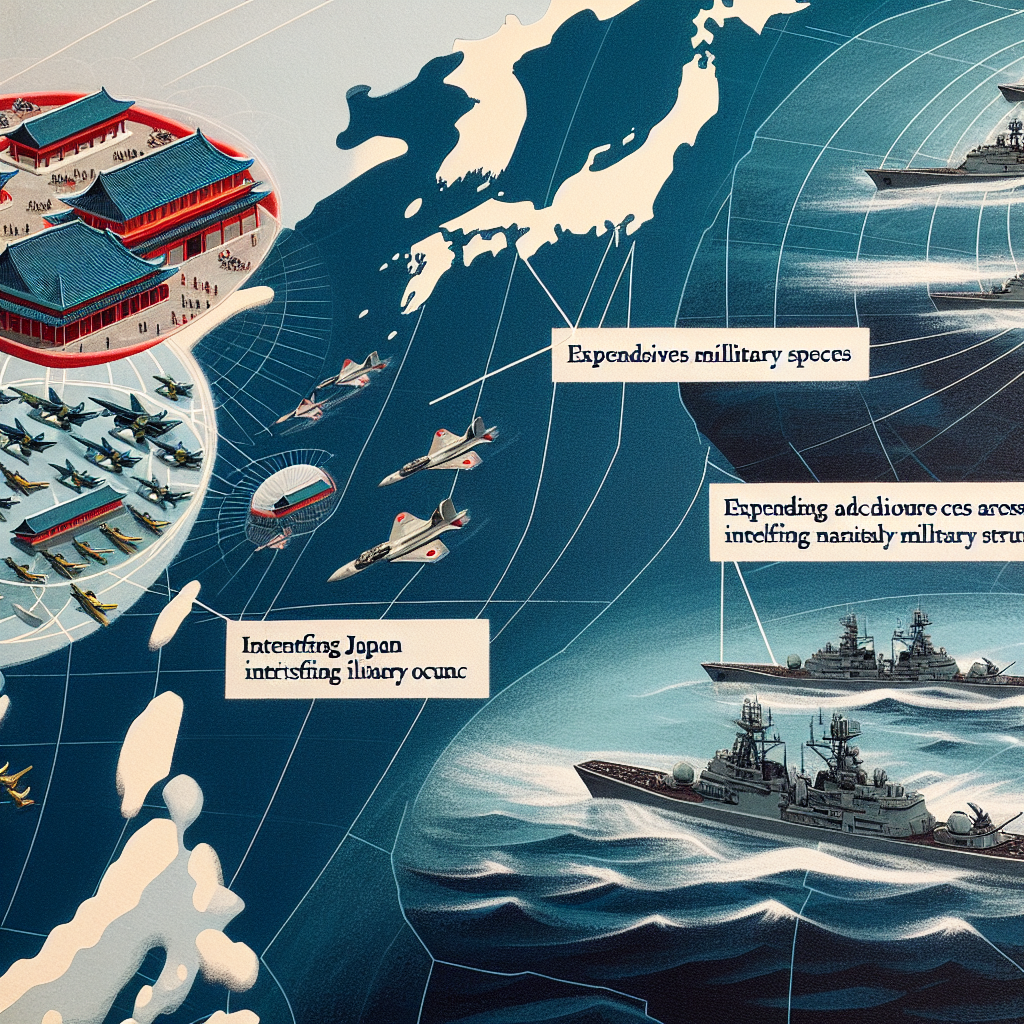In recent years, Beijing has been strengthening its military operations in the surrounding maritime and airspace areas. In response to the heightened geopolitical tensions, Japan has also been ramping up its military efforts by increasing military budgets and stepping up naval exercises in the Indian Ocean and South China Sea.
In early February this year, Japan’s Maritime Self-Defense Force destroyer “JS Akizuki” made its first solo passage through the Taiwan Strait, traveling from north to south towards the South China Sea to participate in joint military exercises with the United States, Australia, the Philippines, and other countries.
According to Bloomberg, polls show that more and more Japanese people are in support of the Self-Defense Forces playing a more significant role.
Katsuya Yamamoto, a senior researcher at the Sasakawa Peace Foundation and retired Rear Admiral of the Maritime Self-Defense Force, stated: “The world has changed, and the Japanese people have realized that we can no longer passively allow China’s actions.”
In recent years, Beijing has intensified maritime and airspace exercises and military deployments around Taiwan, clashed with Japan as Chinese coast guard vessels entered the Diaoyu Islands territorial waters, engaged in standoffs with Philippine vessels near disputed islands and shoals, and dispatched warships into international waters off Sydney, sparking concerns from neighboring countries.
In 2022, when then-Speaker of the United States House of Representatives Nancy Pelosi visited Taipei, China reacted fiercely by launching missiles towards Taiwan, with one missile falling into Japan’s Exclusive Economic Zone, shocking the entire nation. This deepened Japanese concerns that China might target military bases in the mainland United States and Japan, potentially launching preemptive strikes to seize Taiwan.
Previously restrained by the post-war Peace Constitution, Japan’s military development was limited to self-defense. However, in response to China’s military pressure, neighboring countries have had to enhance their own military capabilities.
In 2015, the government of Shinzo Abe reinterpreted Japan’s post-war Peace Constitution to allow for the exercise of “collective self-defense,” enabling Japan for the first time to engage in overseas military operations alongside its U.S. allies.
In 2022, the Japanese government incorporated “counterattack capabilities” into its “National Security Strategy,” signifying that when faced with threats, the country will not be limited to defensive measures but can take offensive responses. This represents a significant shift in national security strategy, further enhancing Japan’s defense autonomy and deterrence.
China’s defense spending is substantial, making it challenging for Japan to keep up. While China’s actual defense spending is not publicly disclosed, the Stockholm International Peace Research Institute estimates that China’s military expenditure was around $314 billion in 2024, roughly half of the total defense spending in Asia and Oceania.
To address these challenges, Japan is increasing its defense budget at the fastest rate in decades. In 2022, Tokyo pledged to allocate 43 trillion yen (approximately $298 billion) over five years for military construction and raise defense spending as a percentage of gross domestic product from slightly over 1% to around 2%.
Japan’s defense-related expenditure for this fiscal year is expected to reach 9.9 trillion yen, including funds for developing a satellite network to detect incoming missiles. Japan has also procured 147 American-made F-35 Lightning II fighter jets, the world’s most advanced stealth fighter aircraft.
These F-35 fighter jets will be equipped with long-range cruise missiles capable of striking military targets on the Chinese mainland from hundreds of miles away. Tokyo is also developing long-range missiles deployable at a series of military bases in Japan’s southwest island chain.
In addition to bolstering military capabilities, Japan has been seeking cooperation with other democratic nations to strengthen collective defense capabilities. Earlier this year during a visit to Manila, Japanese Prime Minister Fumio Kishida and Filipino President Ferdinand Marcos Jr. agreed to initiate talks for the sharing of essential military supplies.
Last year, Japan and the Philippines signed agreements to ease border controls and expedite military training arrangements. The Philippines and Japan are also discussing sharing real-time military information, similar to the existing mechanism of timely military intelligence sharing between Japan and South Korea.
During a visit to Tokyo in March this year, U.S. Secretary of Defense Peter Brian Hegseth stated that the United States and its allies, including Japan, would enhance deterrence against China. He pledged to implement the Biden administration’s plan to establish a new military command center in Japan and further military deployments in the Philippines.
Koichi Isobe, a strategic consultant at Kawasaki Heavy Industries and retired Lieutenant General of the Japanese Ground Self-Defense Force, emphasized the importance for Japan to send a clear message to China.
“If deterrence fails, the cost will be exceedingly high,” Isobe stated.

